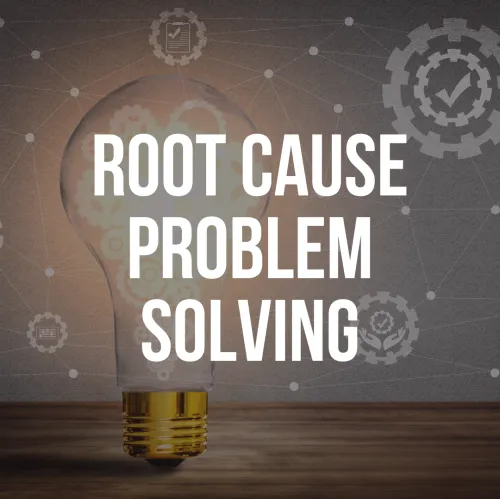Lean Six Sigma Green Belt
Lean Six Sigma Green Belt
Course Duration: 2 DaysIntroduction
Six Sigma History
American company Motorola developed a new concept of quality management process in 1986. Over the years, it has been refined and polished into a sound theory of principles and methods, aimed at business transformation through a clearly defined process. This finished product is Six Sigma.Overview
Six Sigma Green Belt provides the necessary skills to successfully apply a field proven methodology that helps process improvement. Moreover, it positively influences data-based decision making in sloving problems and completing projects within predetermined deadlines.Goals of Six Sigma
The concept of Six Sigma has a simple goal - delivering near-perfect goods and services for business transformation for optimal customer satisfaction (CX). Goals are achieved through a two-pronged approach:- Identification of the problem
- Solving Problem
Objective
Upon completion of this program, participants should be able to:- Reduction in process cycle time
- Reduction of scrap generated by a process
- Increasing customer satisfaction
- Reduction in the number of factory defects
- Reduction or elimination of costly reworks
Key Content
- Introduction
- History of Six Sigma
- Six Sigma Belts Hierarchy
- What is Six Sigma Green Belts?
- Six Sigma link with Company Vision, Objective, Measurement and Target (ISO9001:2015)
- 7 key Six Sigma principles
- Always focus on the customer
- Understand how work really happens
- Make your processes flow smoothly
- Reduce waste and concentrate on value
- Stop defects through removing variation
- Get buy-in from the team through collaboration
- Make your efforts systematic and scientific
- The Six Sigma Methodology
- DMAIC: D - Define, M - Measure, A - Analyse, I - Improve, C - Control. DMAIC is applied in the manufacturing of a product or delivery of a service.
- DMADV: D - Define, M - Measure, A - Analyse, D - Design, V - Validate
- Six Sigma Techniques:
- Brainstorming
- Root Cause Analysis / The 5 Whys
- Voice of the Customer
- The 5S System
- Kaizen (Continuos Improvement)
- Benchmarking
- Value Stream Mapping
- The Six Sigma Process of Business Transformation
-
Define Phase
-
- The Basics of Six Sigma
- The Fundamentals of Six Sigma
- Selecting Lean Six Sigma Projects
- The Lean Enterprise
- Six Sigma Tools:
- Affinity Diagram
- Failure Mode and Effect Analysis (FMEA)
- Process Mapping
- Value Added Flow Analysis
- Value Stream Mapping
- 7 Wastes
- Take Time
- Prioritization Matrix
- The 5Ss
- PDSA
- Six Sigma Tools:
2. Measure Phase
- Process Definition
- Six Sigma Statistics
- Measurement System Analysis
- Process Capability
- Six Sigma Tools:
- Histogram
- Pareto Chart
- Trend Chart
- Six Sigma Tools:
3. Analyse Phase
- Patterns of Variation
- Inferential Statistics
- Hypothesis Testing
- Hypothesis Testing with Normal Data
- Hypothesis Testing with Non-Normal Data
- Six Sigma Tools:
- The 5 Whys
- Ishikawa Diagram
- Regression Analysis
- Six Sigma Tools:
4. Improve Phase
- Simple Linear Regression
- Multiple Regression Analysis
- Six Sigma Tools:
- A3
- Kaizan
- Hoshni Kanri
- Kanban Pull System
- Poka Yoke
- Heijunka Box
- Single Minute Exchange of Die (SMED)
- Distribution, logistics, delivery (JIT)
- Six Sigma Tools:
5. Control Phase
- Lean Controls
- Statistical Process Control (SPC)
- Six Sigma Control Plans
- Six Sigma Tools:
- Statistical Process Control (SPC)
- Standardized Work
- Six Sigma Tools:
Inquiry - Lean Six Sigma Green Belt









